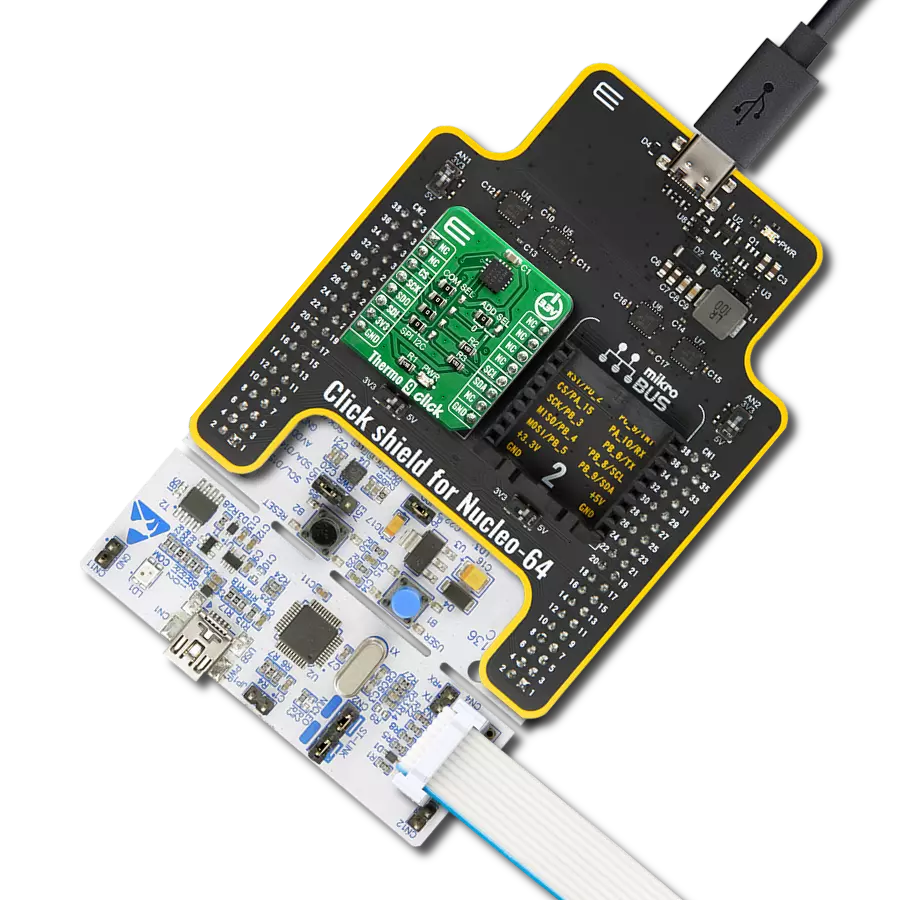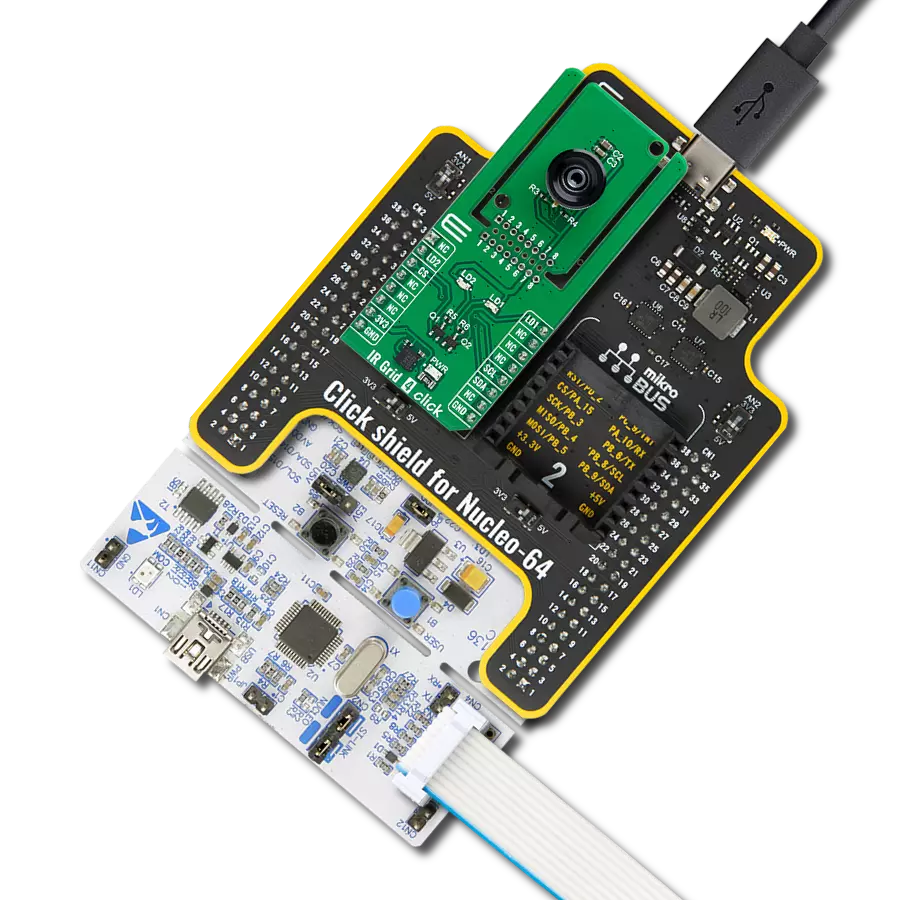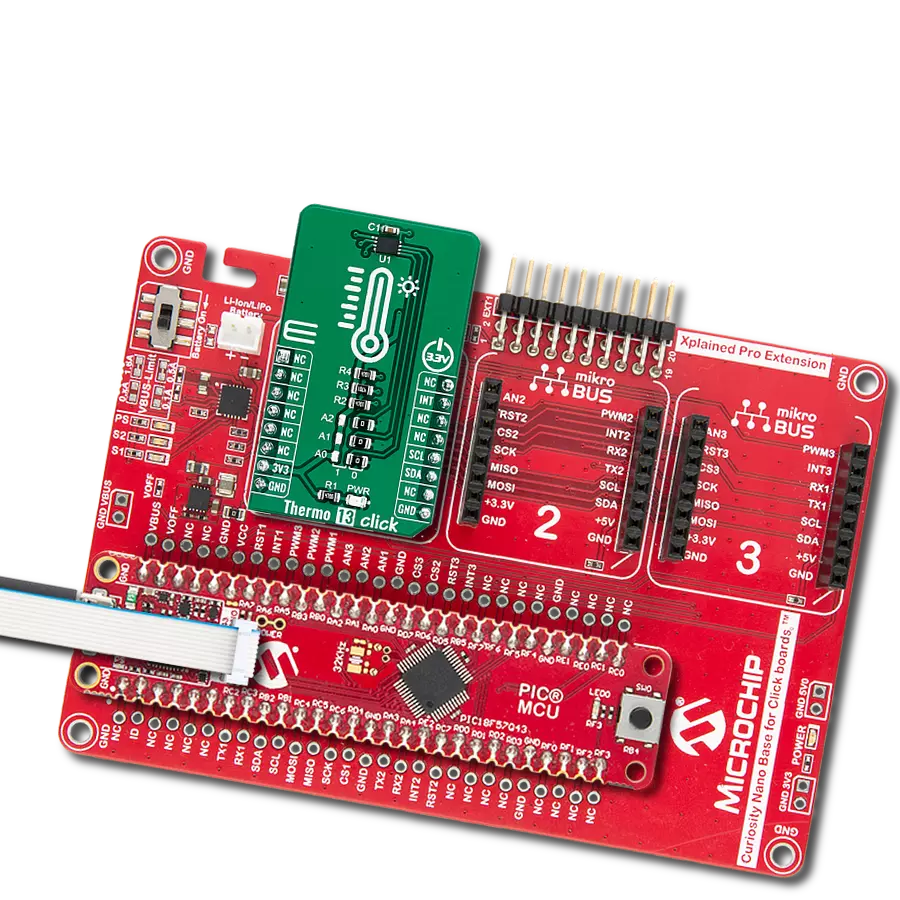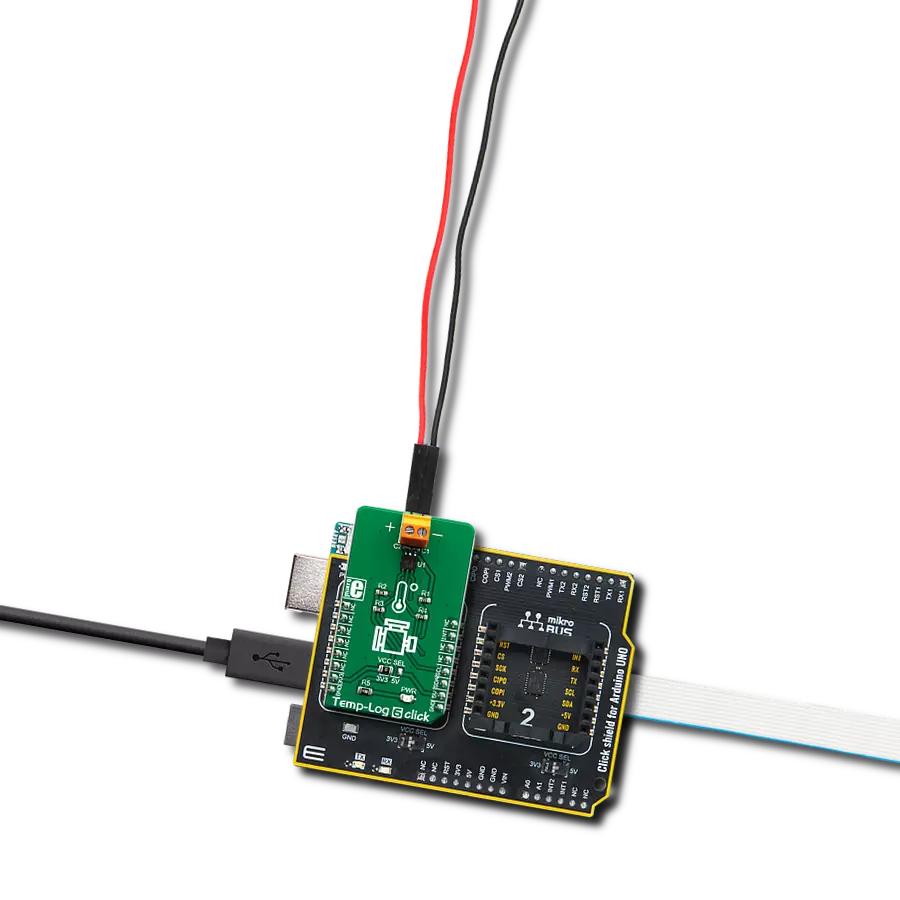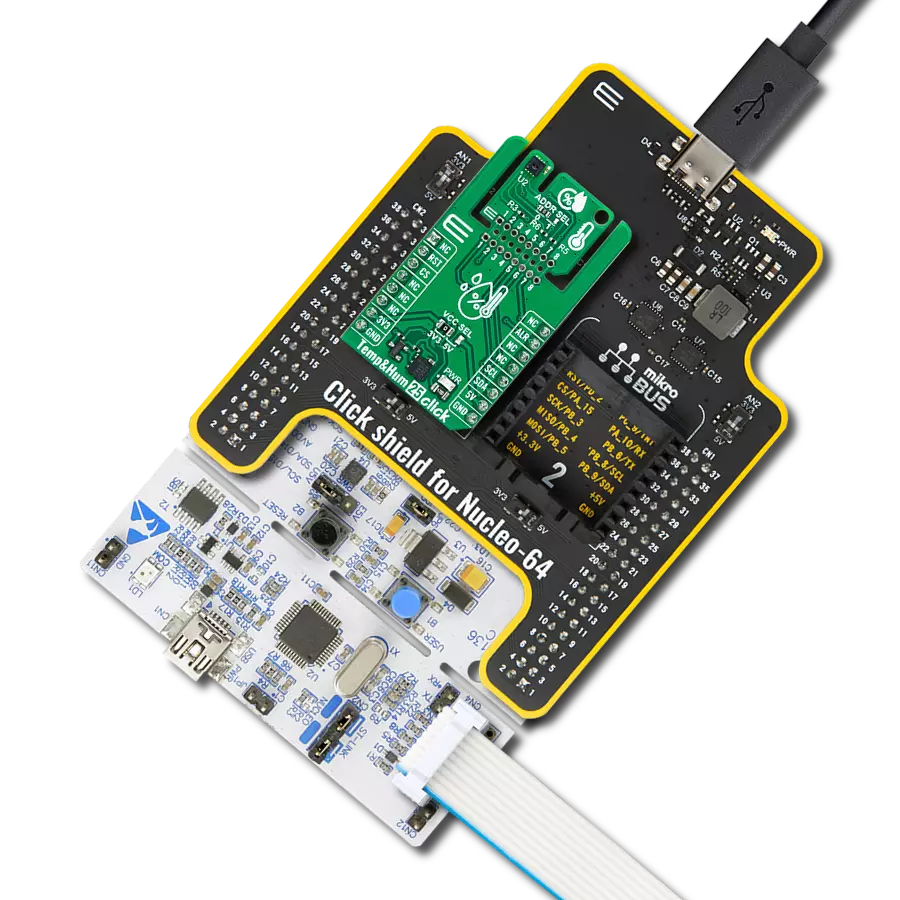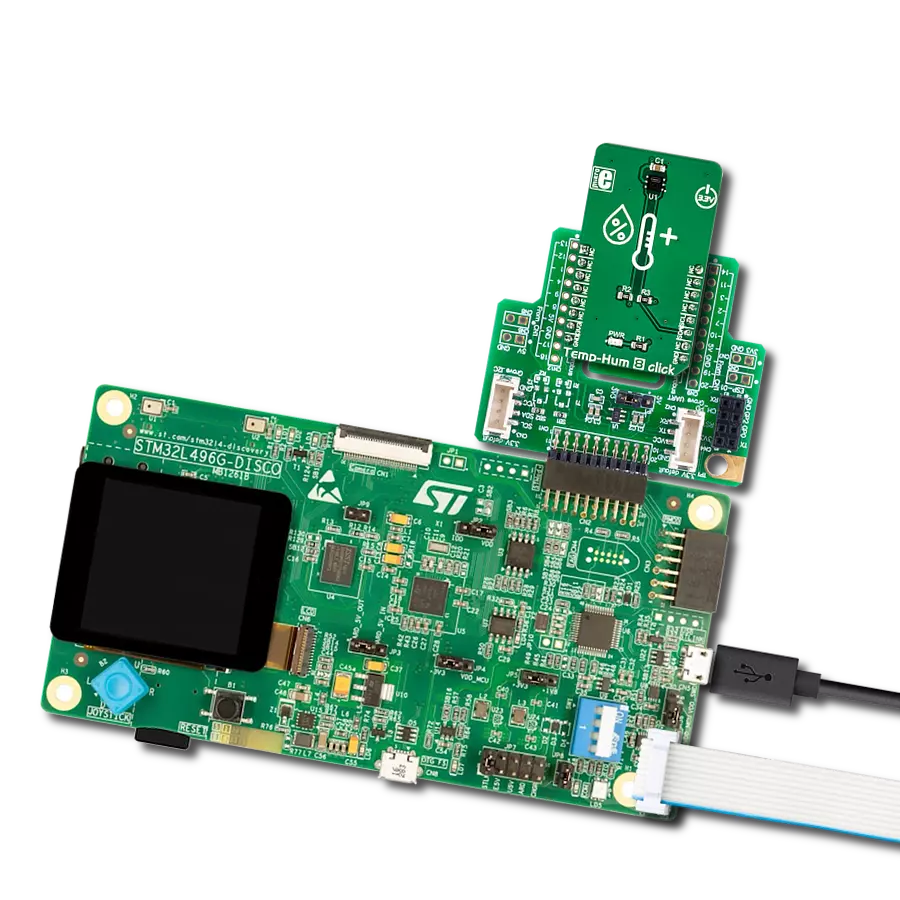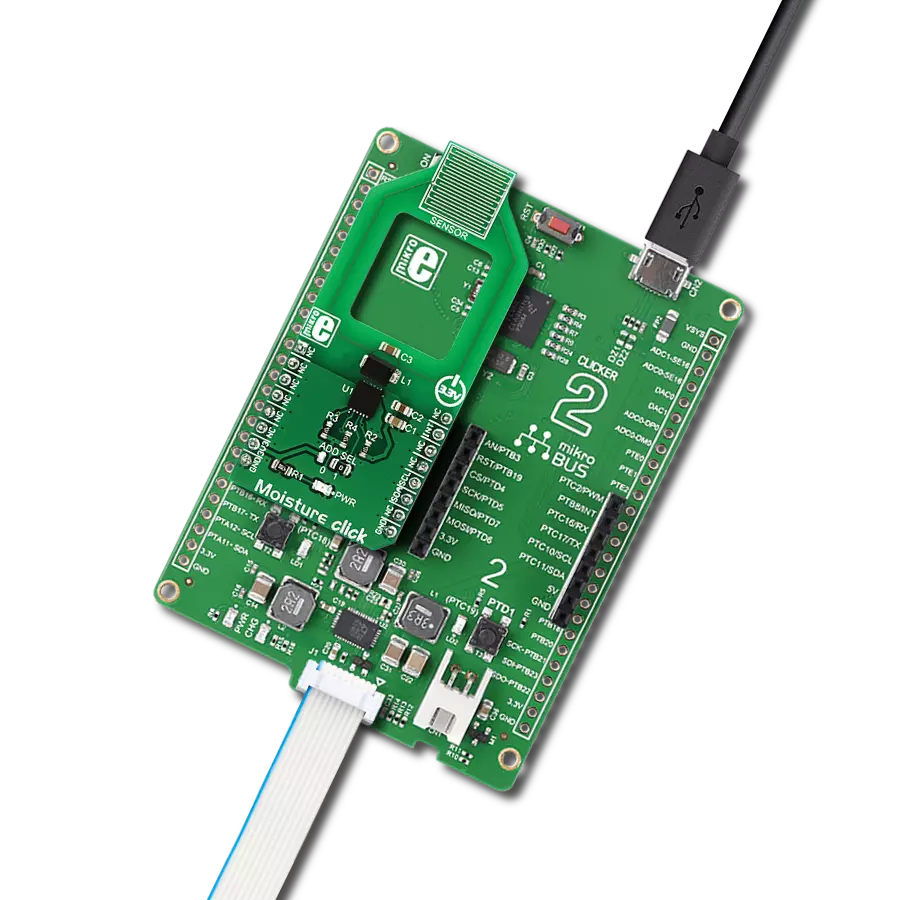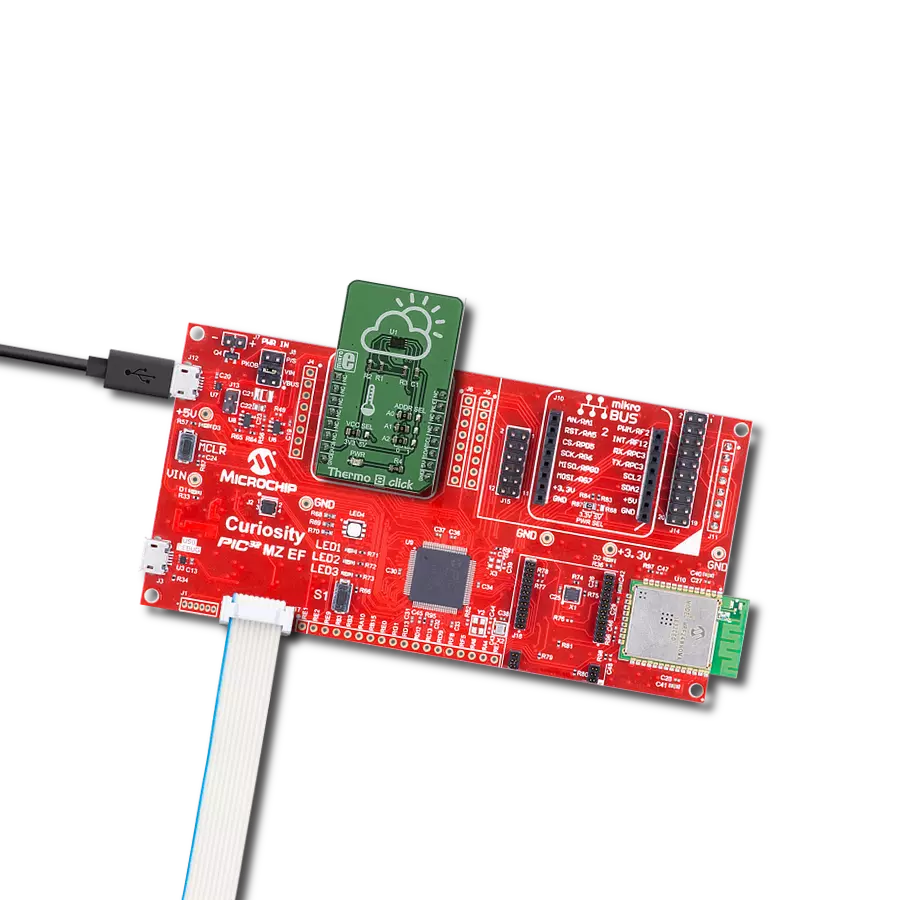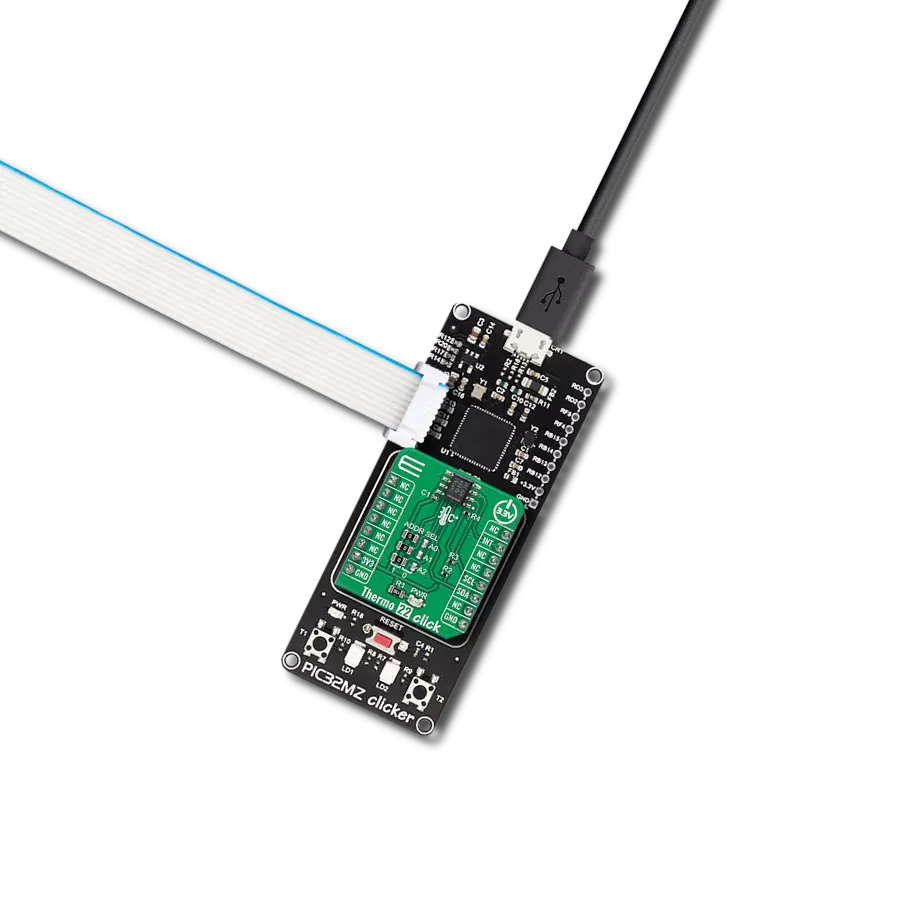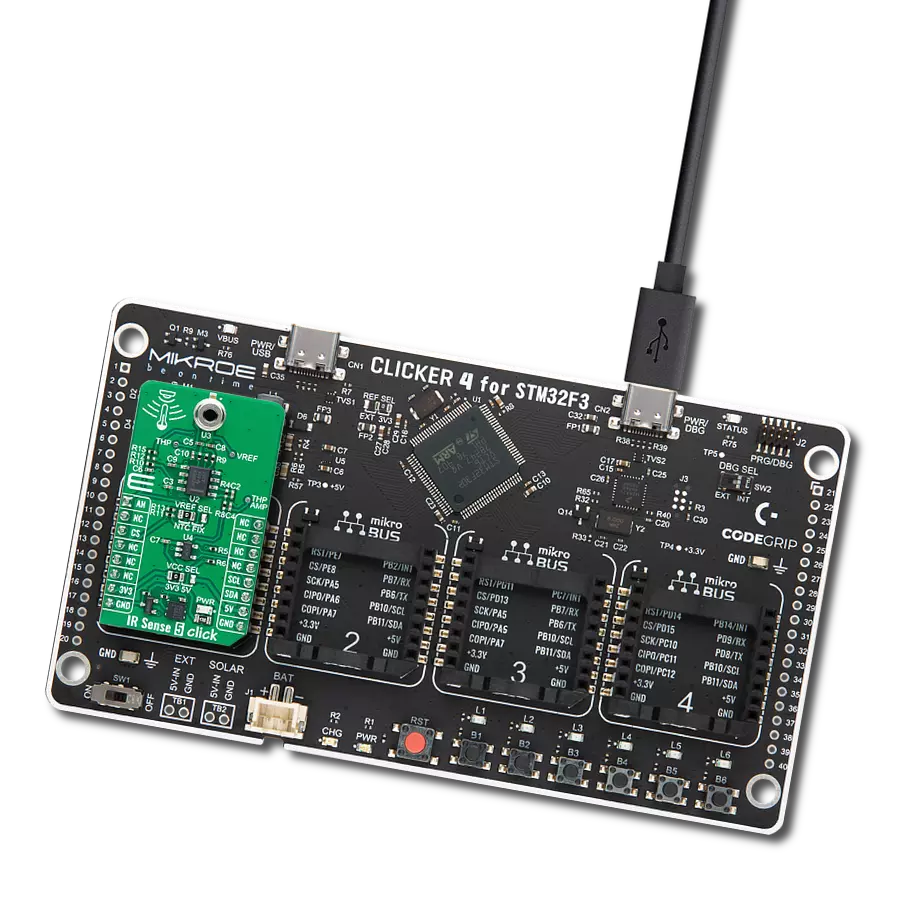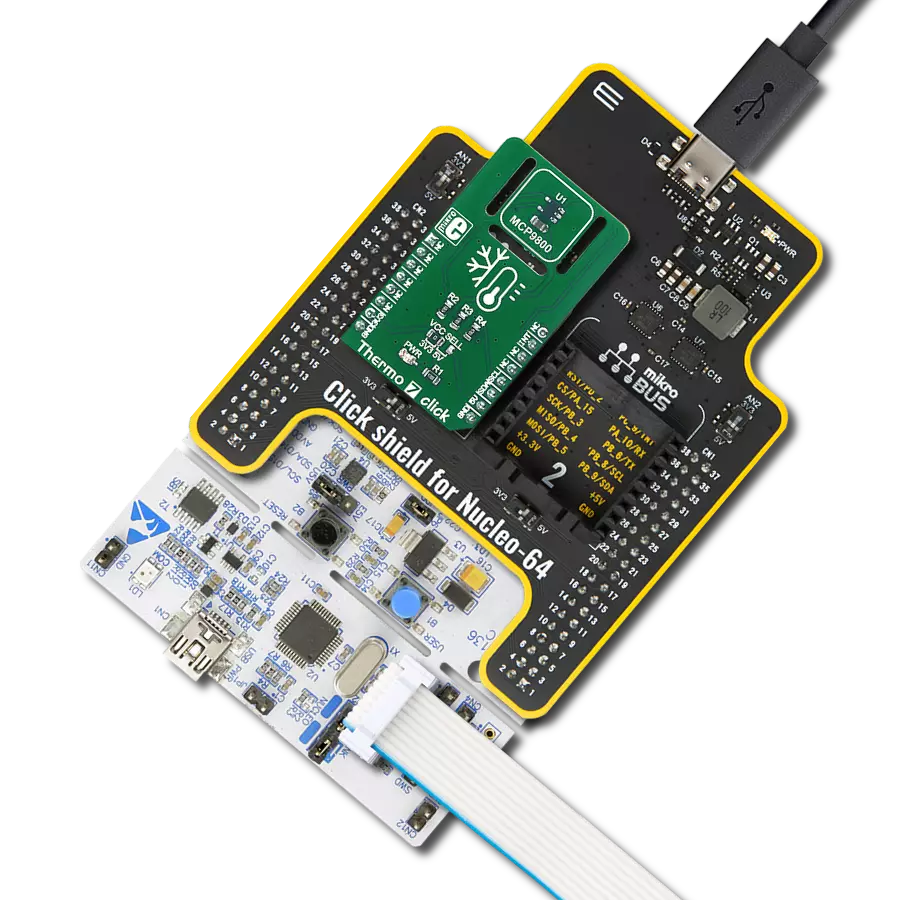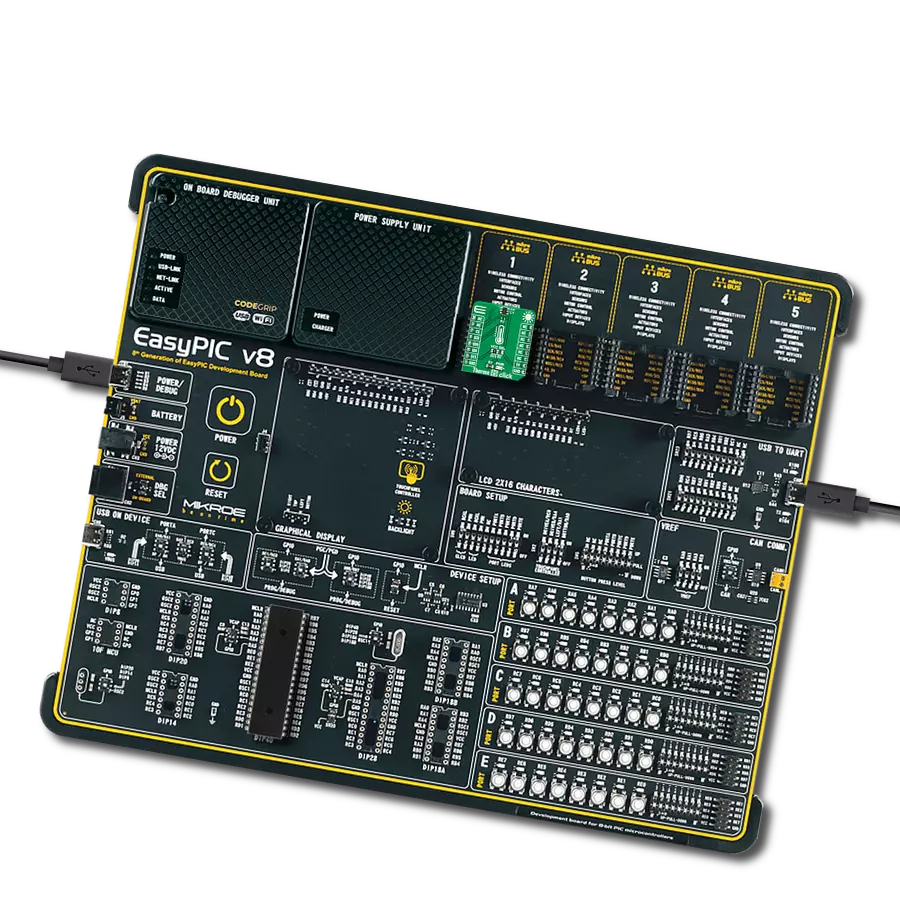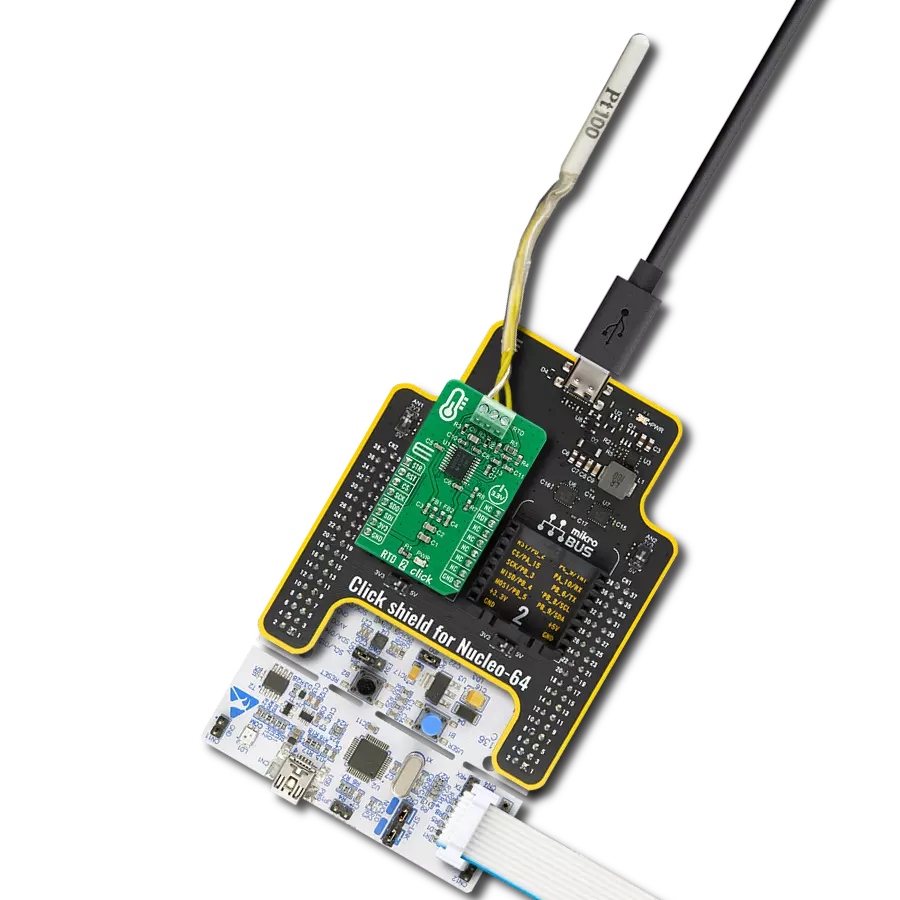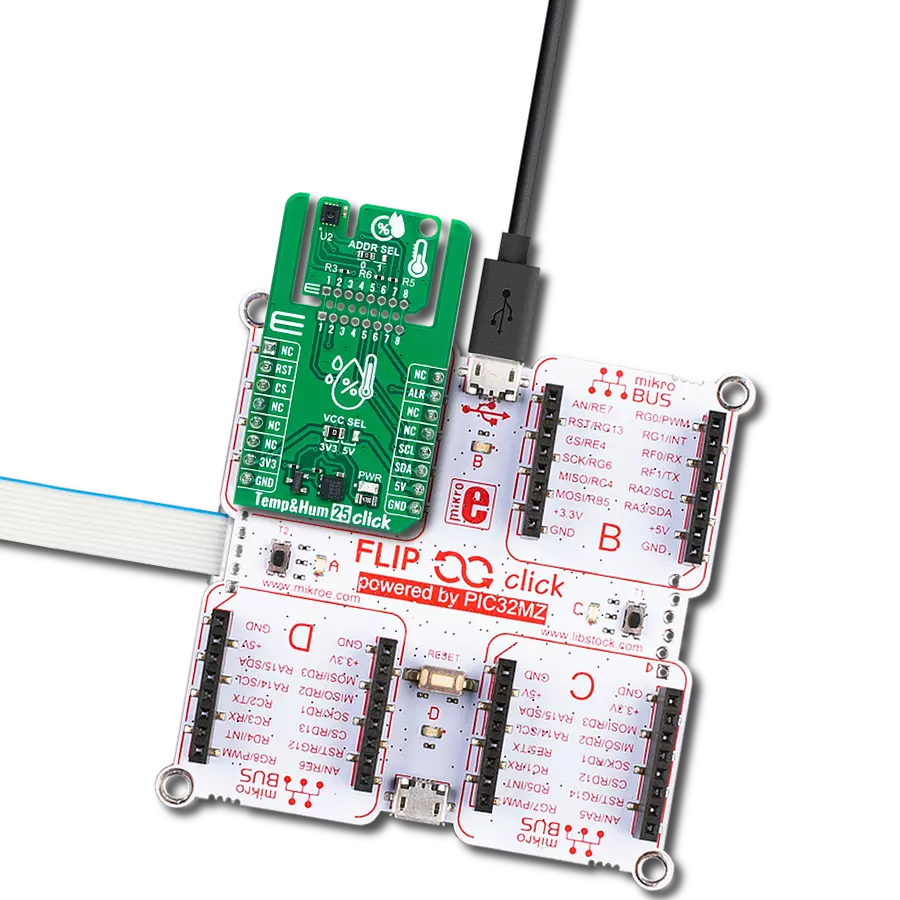Experience the power of contactless temperature monitoring for swift, accurate, and reliable results!
A
A
Hardware Overview
How does it work?
IrThermo 2 Click is based on the TMP007, an infrared thermopile sensor with an integrated Math Engine from Texas Instruments. When there is infrared radiation, and the sensor absorbs it, the integrated Math Engine calculates its temperature by comparing it with the temperature of the silicon die. The sensor is factory calibrated, but the user can adjust the calibration coefficients for specific applications. This adjustment could be the correction for the range, field of view, object shape, and environmental factors. Besides the direct
reading of the object temperature, Math Engine features programmable alerts, nonvolatile memory (EEPROM) for storing calibration coefficients, and transient correction. The IrThermo 2 Click uses an industry-standard I2C interface to communicate with the host MCU over the mikroBUS™ socket. One of eight programmable I2C addresses can be set over the ADR1 and ADR0 solder jumpers labeled ADDR SEL and positions 1 and 0. Those jumpers are set to 0 (GND) by default. It also features an active LOW
alert output on pin AL that can be used as an alert function if the TMP007 is working in an interrupt mode. This Click board™ can operate with either 3.3V or 5V logic voltage levels selected via an onboard jumper. This way, both 3.3V and 5V capable MCUs can use the communication lines properly. However, the Click board™ comes equipped with a library containing easy-to-use functions and an example code that can be used, as a reference, for further development.
Features overview
Development board
Nucleo 32 with STM32F031K6 MCU board provides an affordable and flexible platform for experimenting with STM32 microcontrollers in 32-pin packages. Featuring Arduino™ Nano connectivity, it allows easy expansion with specialized shields, while being mbed-enabled for seamless integration with online resources. The
board includes an on-board ST-LINK/V2-1 debugger/programmer, supporting USB reenumeration with three interfaces: Virtual Com port, mass storage, and debug port. It offers a flexible power supply through either USB VBUS or an external source. Additionally, it includes three LEDs (LD1 for USB communication, LD2 for power,
and LD3 as a user LED) and a reset push button. The STM32 Nucleo-32 board is supported by various Integrated Development Environments (IDEs) such as IAR™, Keil®, and GCC-based IDEs like AC6 SW4STM32, making it a versatile tool for developers.
Microcontroller Overview
MCU Card / MCU

Architecture
ARM Cortex-M0
MCU Memory (KB)
32
Silicon Vendor
STMicroelectronics
Pin count
32
RAM (Bytes)
4096
You complete me!
Accessories
Click Shield for Nucleo-32 is the perfect way to expand your development board's functionalities with STM32 Nucleo-32 pinout. The Click Shield for Nucleo-32 provides two mikroBUS™ sockets to add any functionality from our ever-growing range of Click boards™. We are fully stocked with everything, from sensors and WiFi transceivers to motor control and audio amplifiers. The Click Shield for Nucleo-32 is compatible with the STM32 Nucleo-32 board, providing an affordable and flexible way for users to try out new ideas and quickly create prototypes with any STM32 microcontrollers, choosing from the various combinations of performance, power consumption, and features. The STM32 Nucleo-32 boards do not require any separate probe as they integrate the ST-LINK/V2-1 debugger/programmer and come with the STM32 comprehensive software HAL library and various packaged software examples. This development platform provides users with an effortless and common way to combine the STM32 Nucleo-32 footprint compatible board with their favorite Click boards™ in their upcoming projects.
Used MCU Pins
mikroBUS™ mapper
Take a closer look
Click board™ Schematic

Step by step
Project assembly
Software Support
Library Description
This library contains API for IrThermo 2 Click driver.
Key functions:
irthermo2_get_raw_temperature- Function read 16-bit data from raw temperature register and calculate temperature in degrees Celsiusirthermo2_get_object_temperature_c- Function read 16-bit data from object temperature register and calculate temperature in degrees Celsiusirthermo2_get_object_temperature_f- Function read 16-bit data from object temperature register and calculate temperature in degrees Fahrenheit
Open Source
Code example
The complete application code and a ready-to-use project are available through the NECTO Studio Package Manager for direct installation in the NECTO Studio. The application code can also be found on the MIKROE GitHub account.
/*!
* @file main.c
* @brief IrThermo2 Click example
*
* # Description
* IrThermo 2 is a non-contact temperature measurement Click. The sensor absorbs the infrared
* radiation emitted by the target object (withing the sensor’s field of view) and
* the integrated math engine calculates its temperature by comparing it with the temperature
* of the silicon die. The measurement range of the sensor is between –40°C to 125°C.
*
* The demo application is composed of two sections :
*
* ## Application Init
* Initialization driver enable's - I2C, set default configuration and start write log.
*
* ## Application Task
* This is a example which demonstrates the use of IrThermo 2 Click board.
* Measures the object temperature value from sensor and calculate temperature in degrees Celsius [ C ].
* Results are being sent to the USART Terminal where you can track their changes.
* All data logs on usb uart for aproximetly every 5 sec when the data value changes.
*
*
* @author MikroE Team
*
*/
#include "board.h"
#include "log.h"
#include "irthermo2.h"
static irthermo2_t irthermo2;
static log_t logger;
static float temperature;
void application_init ( void )
{
log_cfg_t log_cfg;
irthermo2_cfg_t cfg;
/**
* Logger initialization.
* Default baud rate: 115200
* Default log level: LOG_LEVEL_DEBUG
* @note If USB_UART_RX and USB_UART_TX
* are defined as HAL_PIN_NC, you will
* need to define them manually for log to work.
* See @b LOG_MAP_USB_UART macro definition for detailed explanation.
*/
LOG_MAP_USB_UART( log_cfg );
log_init( &logger, &log_cfg );
log_info( &logger, "---- Application Init ----" );
// Click initialization.
irthermo2_cfg_setup( &cfg );
IRTHERMO2_MAP_MIKROBUS( cfg, MIKROBUS_1 );
irthermo2_init( &irthermo2, &cfg );
irthermo2_default_cfg( &irthermo2 );
Delay_ms ( 100 );
log_info( &logger, "---- Application Task ----" );
}
void application_task ( void )
{
temperature = irthermo2_get_object_temperature_c( &irthermo2 );
log_printf( &logger, " Temperature : %.2f C\r\n", temperature );
log_printf( &logger, "---------------------------\r\n" );
Delay_ms ( 1000 );
}
int main ( void )
{
/* Do not remove this line or clock might not be set correctly. */
#ifdef PREINIT_SUPPORTED
preinit();
#endif
application_init( );
for ( ; ; )
{
application_task( );
}
return 0;
}
// ------------------------------------------------------------------------ END
Additional Support
Resources
Category:Temperature & humidity




















